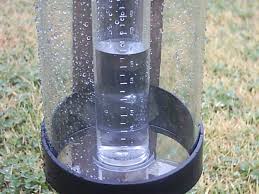How does a rain gauge work?« Back to Questions List
|
An instrument used by the meteorologists to measure the amount of rainfall over a period of time is the rain gauge. Rainfall is generally measured in millimeters or inches. There are many kinds of gauges – standard graduated cylinders, weighing gauges and tipping bucket gauges. The standard rain gauge instrument generally consists of a funnel connecting to a graduated cylinder which is marked in millimeters. It has an outer cylinder which is 20 cm in diameter and 50 cm tall. When the rainwater overflows the inner cylinder, the large outer cylinder holds it. The amount of water in the outer cylinder and the inner cylinder are taken for rainfall measurement. Tipping bucket rain gauges has a collector balanced on a pivot. It has reed switches and magnets that are used to generate the pulses that are in turn counted by electronic circuit within the device. The rain gauge monitor counts the number of times the ‘collecting cups’ tip backwards and forwards. Each time this happens a certain amount of water has been collected. Knowing how many times the cups have rocked backwards and forwards will give an indication of how much rainfall there has been. Rain gauges should be placed in an open area where there are no obstacles like buildings or trees to block the rain. This is also to prevent the water collected on the roofs of buildings or the leaves of trees from dripping into the rain gauge after a rain, resulting in inaccurate readings.
What is amphidromy?What are feral animals? |


